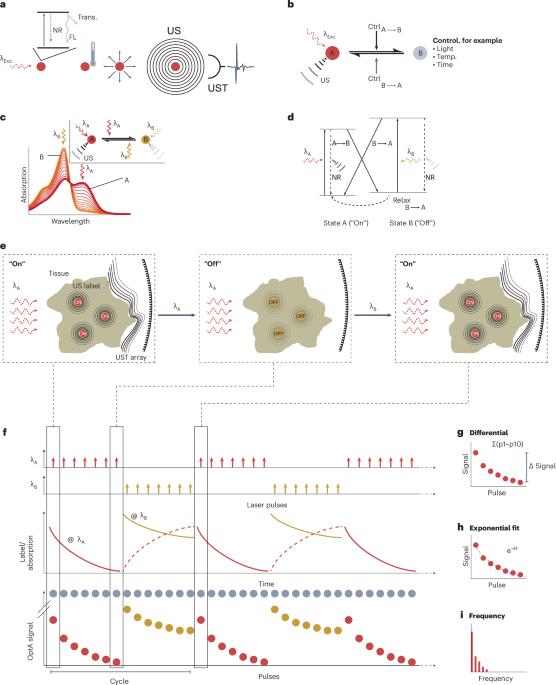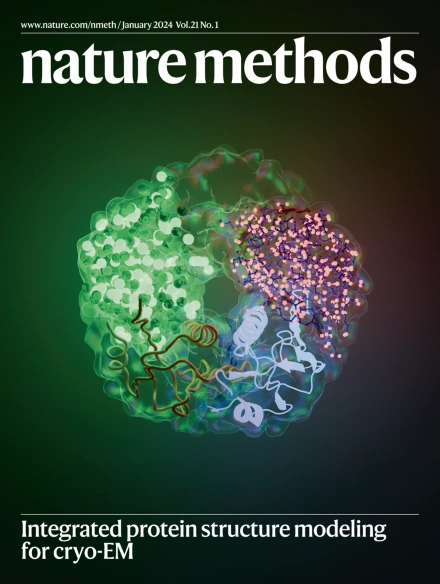控制光声:光开关光声成像。
IF 36.1
1区 生物学
Q1 BIOCHEMICAL RESEARCH METHODS
引用次数: 0
摘要
光声(光声)成像技术的进步使高分辨率光学成像比光学显微镜成像更深入。然而,虽然无标签光声技术已经进入临床应用,但生物成像还需要无处不在的光声标签,其使用方式类似于荧光蛋白推动光学显微镜技术的发展。我们回顾了光开关技术的进展,这些技术为生物光声成像带来了新的亮点,或者打个比方,"带来了新的声音"。与其他光声标签相比,光开关以工程标签和新型设备为基础,利用光或其他能量形式实现信号调制和同步检测,从而最大限度地提高对比度和检测灵敏度。在此,我们将解释光谱域与时间域的对比度增强,回顾标签和开关的关键概念及其调制光声信号的特性。我们进一步概述了系统和应用,并讨论了切换如何使细胞或分子对比的光声成像在深度和分辨率上超越其他光学方法。本文章由计算机程序翻译,如有差异,请以英文原文为准。

Controlling the sound of light: photoswitching optoacoustic imaging
Optoacoustic (photoacoustic) imaging advances allow high-resolution optical imaging much deeper than optical microscopy. However, while label-free optoacoustics have already entered clinical application, biological imaging is in need of ubiquitous optoacoustic labels for use in ways that are similar to how fluorescent proteins propelled optical microscopy. We review photoswitching advances that shine a new light or, in analogy, ‘bring a new sound’ to biological optoacoustic imaging. Based on engineered labels and novel devices, switching uses light or other energy forms and enables signal modulation and synchronous detection for maximizing contrast and detection sensitivity over other optoacoustic labels. Herein, we explain contrast enhancement in the spectral versus temporal domains and review labels and key concepts of switching and their properties to modulate optoacoustic signals. We further outline systems and applications and discuss how switching can enable optoacoustic imaging of cellular or molecular contrast at depths and resolutions beyond those of other optical methods. This Review describes how photoswitchable probes and associated hardware innovations are poised to transform optoacoustic imaging in life sciences research.
求助全文
通过发布文献求助,成功后即可免费获取论文全文。
去求助
来源期刊

Nature Methods
生物-生化研究方法
CiteScore
58.70
自引率
1.70%
发文量
326
审稿时长
1 months
期刊介绍:
Nature Methods is a monthly journal that focuses on publishing innovative methods and substantial enhancements to fundamental life sciences research techniques. Geared towards a diverse, interdisciplinary readership of researchers in academia and industry engaged in laboratory work, the journal offers new tools for research and emphasizes the immediate practical significance of the featured work. It publishes primary research papers and reviews recent technical and methodological advancements, with a particular interest in primary methods papers relevant to the biological and biomedical sciences. This includes methods rooted in chemistry with practical applications for studying biological problems.
 求助内容:
求助内容: 应助结果提醒方式:
应助结果提醒方式:


